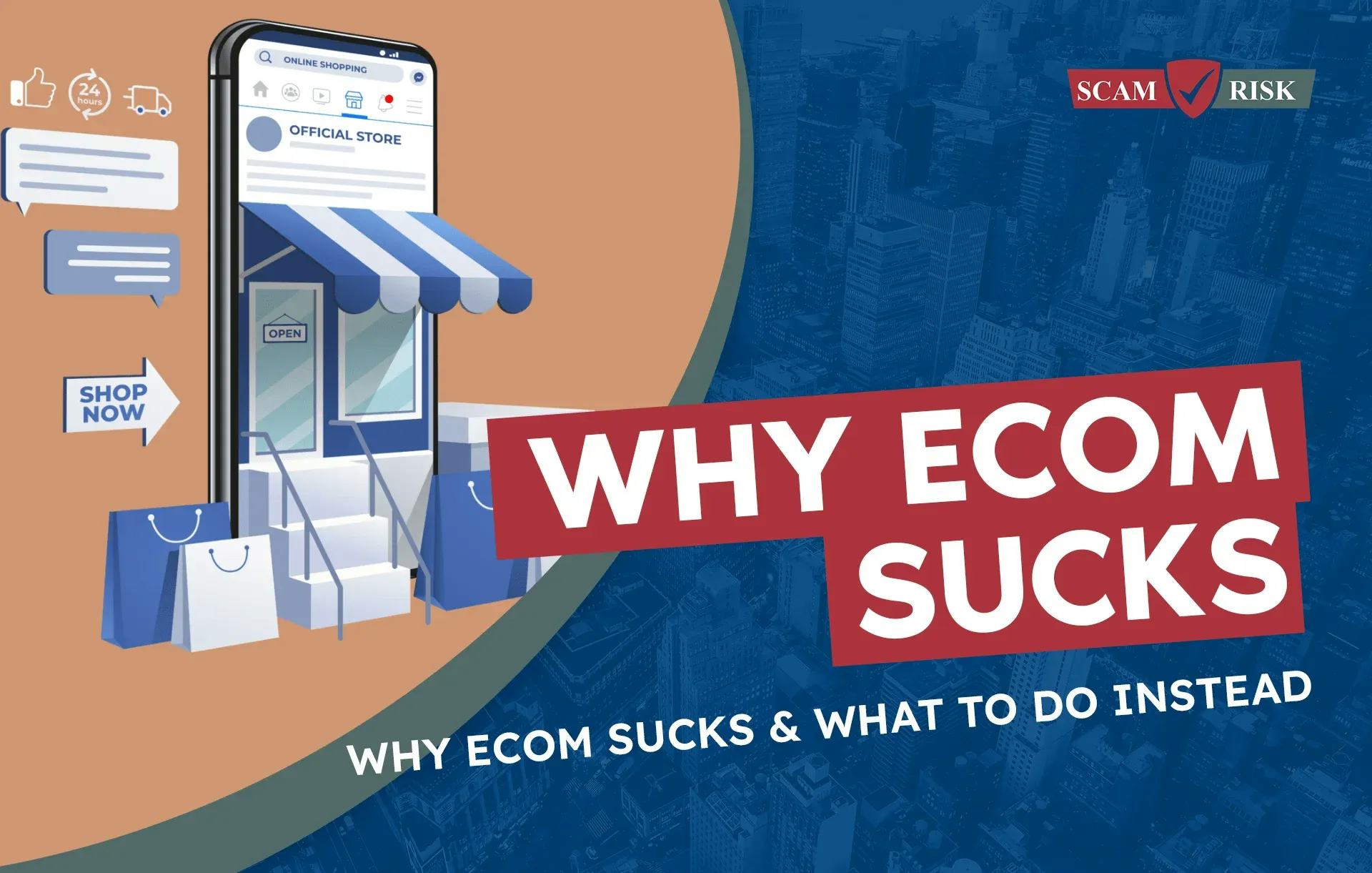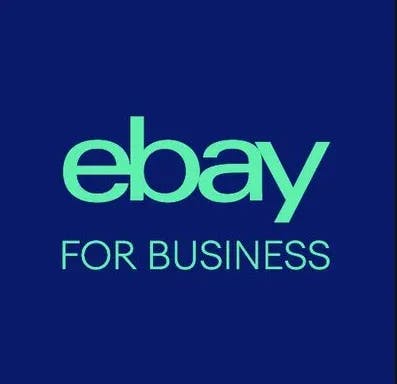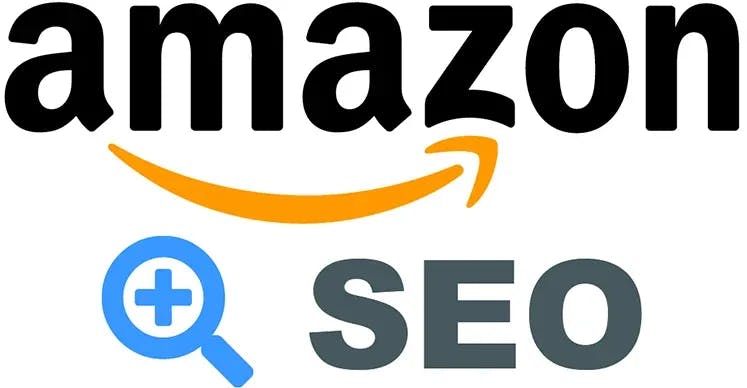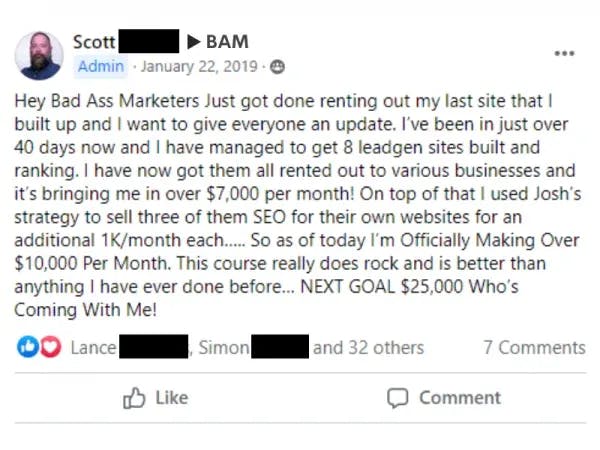Why Ecom Sucks

Why Ecom Sucks In [year]& What To Do Instead
What Is Ecommerce?
It’s another making money online business plan that is centered around selling clapped out, shitty products that supposedly makes you money even though they're just knock offs from China.
But hey, if you wanna risk throwing your life savings into a business model that just got wrecked by Chinese Wholesalers...
Then by all means, don’t let us stop you from creating yet another screw up your parents give you shit about.
It’s supposed to allow you to become a 6-figure Ecommerce king...but it’s truly out of reach for most people like you constrained by budgets and student loans.
That’s just the truth...you won’t get rich by chasing the next hot product that only lasts 3 months.
And while we have to be honest for this breakdown…
Running a Ecommerce Business really does have the ability to make money online and land you some massive profits…
But it’s outdated AF!
At the end, I’ll answer some of the most frequently asked questions regarding Ecommerce and pussy footin’ around with selling cheap Chinese products in general.
And most importantly, I’ll show you the exact system I used to build my own internet marketing business to over $40,000 a month in mostly passive income.
This system made me swear off Ecommerce for good, because it uses some of the same skills but in a much more powerful and profitable way!
But more on that later.
For now let’s hop into all things Why Ecommerce Sucks!
DISCLAIMER:
This Ecom review has been thoroughly researched with information and testimonials that are available to anyone in the public. Any conclusions drawn by myself are opinions.
Why Listen To Us
My name is Josiah, and this is my Dad, Joel.

I built that site in 2020, and it still makes me $1,500 per month. It’s a basic 5 page website I built based on a template the program provides.
The best part to me? My dad and I get to do it all together!
So between the:
Ease of reaching $5-$10K per month in income online
Straightforward-ness of the system to do it
Fact that I get to do it w/ my family
Is why I recommend local lead generation as my #1 business model for making money online.
Sure, it takes some work and dedication – but anyone that tells you that there’s a business out there that requires no work is selling you a lemon.
I’m not saying you need to sign up for the same program I did, but I would definitely recommend giving the business model a peek!
Different Ecommerce Platform Options And Why Their Conversion Rate Suck!
The traditional days of ecommerce are over. You can sell with Ebay, Amazon, Shopify, and even your own hand built website.
But no matter what ecommerce businesses you decide to run just remember...THEY ALL SUCK!
Shopify E Commerce

Shopify has taken the ecommerce space by storm by giving people a platform to sell their own ecommerce products or start their own apparel brand.
In fact, several online store owners created their ecommerce stores based off the high conversion rate templates Shopify offers.
How much does it cost to start a shopify ecommerce business?
At face value...not much at all.
You can build the website yourself for virtually free, other costs will just be your domain name and hosting. Hosting can be about $30 per month and the domain name is usually $12 for the year.
However you can't really run this ecommerce business lean...at least not in the traditional sense. You have to buy tons of product up front. Most gurus teach to be ready to drop $10,000 on your first round of inventory.
Shopify also just takes 2.9% + 30 cents of every sale, NOT profit margins. Be sure to account for this.
Sooo what's the catch?
Well, you know how when someone says "it's too good to be true" then it probably is?
Same thing here.
What most people don't know about ecommerce, especially from your own website, is that you will have to spend a crap ton in advertising.
We're talking SEO, Facebook ads, Google ads, the whole nine yards.

Why?
Well...just because you build a website doesn't mean everyone is going to see it. The ecommerce space is extremely competitive.
If you go the SEO route, which you should if you plan on staying in the business long term, you're going to be competing to rank for national keywords.
And this doesn't come cheap.
SEO for an ecommerce website, from a reputable company that gets results can cost anywhere from $5,000-$20,000 PER MONTH!
But again, let's just say you're trying to make a quick buck, after all, you're running this business lean...only buying products as you need.
You could just run ads on Facebook and Google.
But those aren't cheap either pal!
Most Ecommerce Retailers spend thousands a month in ads.

Why?
Because they know that if they don't, they won't get clicks. And if they don't get clicks, they won't get sales.
At this point you're probably thinking "wait...so most of my budget is going to be going towards Facebook ads that might not even get me sales"
Yep, you're exactly right.
So, are there any good things about Shopify ecommerce?
Well, there sites really do look nice. And they do have decent sales numbers.
But...what other options do you have for ecommerce?
Ebay Ecommerce Store

Yep, Ebay is pretty much the OG ecommerce platform when it comes to products to sell online.
Just talk to Gary Vee, Ebay makes it pretty easy for you to put up listings for your products and plenty of people have gotten rich off of it.
However, the business model is no longer viable in our opinion.
The main issue here is profit margin.
Ebay charges a whopping 10% of your orders that come through them.
Can you see the issue that would arise?
Ecommerce retailers operate on margins.
They'll buy something from a supplier at $10 and sell for say $15.
BUT
Thanks to CHINESE WHOLESALERS (and this isn't ebay specific, but ecommerce as a whole) prices on products have had to be cut significantly and operate on much more small margins than that because they're trying to squeeze ecom hopefuls like you out of the business.
If you hate being forced to CUT your prices to stay competitive and would rather SET and HOLD your own prices to save your margins, then this business model is what you've been missing out on!

So now think of it like this.
Not only do you have your margins being cut, but guess what? You still have to spend thousands on social media ads every single month.
On top of that, you have to create quality content for the ads of these products so it sticks out to your ideal customer.
The bottom line is that Ebay ecommerce is dead for newbies, but the "gurus" will never tell you that because they will try to squeeze every nickel and dime out of you so you'll buy their courses.
So what about Amazon, it can't be as bad as Ebay can it?
Amazon Ecommerce Business

An Ecommerce business on Amazon has the perks of the name.
Ebay has this advantage as well, but not nearly to the degree Amazon does and it's why so many people choose to sell things off of Amazon.
In fact, 49% of all online e commerce transactions take place on Amazon.
So that all sounds great right?
You've got the odds in your favor, people know the name, they trust the name...but where's the catch?
Amazon's fees are 15%.
So let's just say that normally your profit margins are STELLAR and you're managing to pull off 30% profit margins...
That automatically drops in half when you start selling with Amazon, so be ready.

Secondly, it's hard as hell to get your product seen.
Just like google SEO, which is honestly easier in our opinion, you have a bit of Amazon SEO you need to do to get your product on the first page of search results.
Those are extremely hard to fake. You can't fake reviews, you can't fake star ratings, solid product descriptions, it's just extremely difficult.
On top of all that and to make matters even worse...Amazon constantly changes their rules for sellers.
What does this mean?
You could wake up to a suspended store and whatever SINGLE source of income you had...all gone in the blink of an eye.
Unfortunately this is not a rare occurrence and happens daily.
Amazon support also sucks with issues like this as well, they're really milking the whole pandemic thing to excuse themselves for subpar response times.
Now sure, if the stars align...or are just slightly off, you can make some money off of ecommerce with Amazon, but just ask yourself:
Is it worth all the stress?

Ecommerce Pros And Cons
Pros:
- Low Barrier Of Entry: You can literally start a ecommerce online business overnight, if you have $10,000 laying around.
- Work From Home: You really can work entirely from home and never have a boss, as long as your responsible and can do things yourself.
- Multiple Suppliers: You'll have no shortage of suppliers to work with for several products, but communication can be difficult.
- Automation: You can automate almost every process of ecommerce to free up your time, but it costs a lot of money.
Cons:
- Low Profit Margin: As you can tell from earlier in the article, China is squeezing profit margins to extremely low levels.
- High Competition: Because of low barriers to entry, everyone hops in the market and there are literally millions of people selling the same products.
- High Advertising Costs: Whether you do SEO or Paid Ads, your costs are going to be in the thousands each month. Odds are you will spend more money advertising for your products than actually buying products.
- Low Conversion Rates: Unless you're listed on Amazon or Ebay, you'll suffer from lots of window shoppers and no one likes that the ecommerce conversion rate is very low.
- High Shipping Costs And Delayed Shipping Times: Thanks to the pandemic, there are all sorts of new protocols that have been put into place. This means more costs passed onto you.
- Volume: You need to make a high volume of sales just to turn a profit. In fact, you might as well just try affiliate marketing instead (sarcasm) because your profit will be just about the same at the end of the day.
Clearly the list of cons outweighs the pros...but now let's take a deeper look into some frequently asked questions regarding ecommerce.
See More: Top 5 Reasons Ecommerce Businesses Fail

Ecommerce FAQ's
What happens if the shipping company or supplier loses, or fails to fulfill the order?
This is probably something you don't want to hear...but you are still responsible for it. Customers will be the ones coming to you complaining because you said you had the product. If they are not happy, they will leave a bad review...or even report you. On top of that, Amazon, Shopify, Ebay, or whichever of the ecommerce businesses you choose work with can take down your store because of it.
How much money do I need to start an Ecommerce Business?
Once you get inside those expensive ecommerce courses, the course guru will tell you that you'll need to buy at least $5,000-$10,000 worth of inventory for your first launch. Well, actually he/she won't tell you...some recording of them from 2-3 years ago will.
You'll also need another $5,000-$10,000 to use for advertising costs and PPC.
So in total, you're looking at $10,000-$20,000 bare minimum to start in 2021.
How much does a Ecommerce site cost?
Realistically, you are looking at paying anywhere from $1,000-$10,000 JUST to have the site built. For Things like SEO you are looking at easily $1,000 per month additionally.
How much will I have to pay in ads for ecommerce?
If you press the gurus really hard, they will tell you that they spent thousands of dollars on ads up front to get sales in the door. And now, even with 6 figure businesses, they still pay thousands each month in paid ads.
What are the industry average profit margins for ecommerce?
Most Ecom gurus get a 10-30% profit margin. However Ebay and Amazon quickly cut that in half and Chinese wholesalers are squeezing that close to 0.
What Is Our Top Recommendation For Making Money Online In 2024?

Our review team has come across a program in the real estate industry that is next level!
Although it’s not real estate in the traditional sense, it’s all digital.
Where Ecom falls short is in scalability.
You can’t realistically expect to be able to make passive income when you have to watch your store and manage ads all day.
But what if you leverage it?
With this Digital Leasing program, you can have the ability to completely walk away from the laptop because there is no ad management!
Sound too good to be true? Of course it does! But it isn’t…in fact, business owners wish they had this skill!
All you have to do is build and rank a website and forward the jobs off to a business owner in town, you could even email it to them!
This works for literally any service based business, tree service, plumbing, towing, etc.
How do you get paid and how much?
Simple, after you forward the jobs off to a business owner and he makes some money off of them, you simply ask to make the deal beneficial for each other.
A fair price to charge per lead, depending on the industry is 10-20%…let’s just use the tree service industry for example and go by worst case scenario.
Let’s say you build and rank the site and only 10 jobs a month come in. The average tree service job is anywhere from $500-$2000!
That means at bare minimum you have an asset worth $500 a month!
See why they call it Digital Leasing now? That’s a rent payment.
The great thing is how easy it is to scale. You don’t have to answer the phone…all you have to do is get the phone to ring.

Remember Ecom and all the small profit margins?
This one actually allows you to collect that without being on the laptop managing a retail store all day. Truly passive income!
The training program takes making money online to a whole other level. The owner of the program walks you through how to build and rank a site hand in hand, with the occasional voice over when he is sharing his screen.
You will learn the importance of they type of keywords you need, website name, how to send call notifications via email, backlinking, and benefit from all the advice / past experiences of leaders in the group.
Once the training program is completed you will also have access to a Facebook group much better than any of the Ecommerce Companies in our opinion. This group is much more active.
Unlike an Ecommerce store, where you have to run ads all day and worry about getting a $5 profit off a $50 order value 1,000 times over on top credit statement after credit statement…. A business will always want more leads and another job. In fact the person doesn’t even care that the job isn’t coming from their website name…they see it as it is…expanding Digital Leasing.
More people have been able to walk away from their 9-5 job as well.
Digital Leasing allows you to have total passive income with most of your day being spent OFF the laptop.
Now, I know you probably have tons of questions… So, check this out to learn more.

#1 Business Recommendation
We each make around $10,000 per month with the help of this system.
yes, show me more





